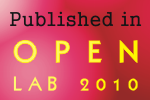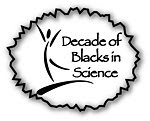There are many names for it – poop, manure, sludge, biosolids, compost, or humus, but all of it is the organic waste that’s left over. Especially important for the theme of my page is how do people live and interact with our environment and how do human societies (especially large cities) handle their waste and use our environment responsibly?
Municipalities handle waste water treatment. An important part is separating the solids from the liquids. But there are a lot of solids – called sludge after it has been separated and treated to kill any germs – and what happens with all of this poop? It can be disposed of on a landfill or applied to farm lands. Fertilizing farm lands is not much different than fertilizing gardens or lawns. In fact, the treated poopy water, called recycled water, is sometimes used to water lawns (an effort to save good clean drinking water for people).
The recent events about using sewer sludge in a science study have caused much attention, especially among activists. Based on the majority of reactions, I realize ‘re-using the stinky stuff’ seems to have most people turning up their noses (pun intended). It just seems to me that people are really surprised (and offended) by the ‘re-use’ of waste in this situation. But recycling poop isn’t new, especially to fertilize lawns. In fact, it is the one of the oldest methods of nutrient and energy recycling in nature and in human history.
Classic examples of ‘re-uses’ of poop include:
1. Fuel. Poop is an excellent source of fuel. Genghis Khan and the Western cowboys used ‘cow chips’ for fire fuel. There is no firewood on the grass plains. Cow chips however were abundant. After drying, the manure patty could be easily cut in pieces or slices and carried in pouches. The chips can burn for a long time and provide a more controlled fire. Even now, sludge from sewer treatment plants or manure from large farms and ranches is burned to create electricity and supplied to the power grid.
2. Fertilizer. Manure, from livestock mainly, has always been ‘added back’ to the soil. Humus rich soils are renowned for their ability to yield larger fruits and vegetables with little to no chemicals used. In fact, the whole go organic craze is built on composting and humus - which includes using all usable waste, even human. You can buy humus rich soil or humus products at garden and farm supply stores. Some Super Go Green advocates are even encouraging people to purchase and use composting toilets so that they can shorten the cycle and do it yourself.
3. Animal Bedding. This one was new to me. I was reading a children’s book about Dairy Farms and after the sludge has been treated the left over solids can also be made into animal bedding. Reference: Clarabelle Making Milk and So Much More.
At the very least, this should give us pause. I hope that the next time you flush you think about what happens down the pipe. Farewell to "Flush and Forget" .























No comments:
Post a Comment